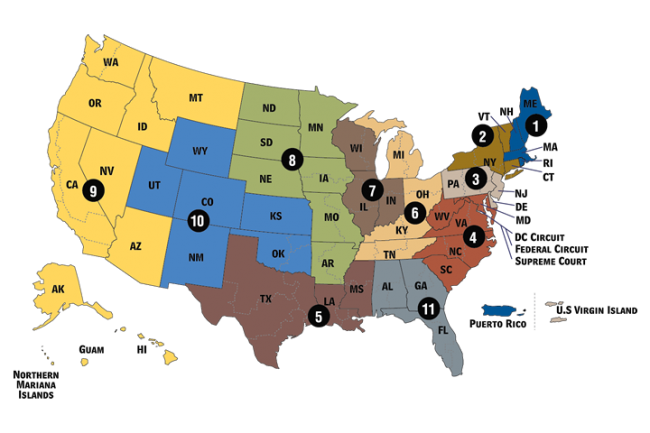


Article III of the U.S. Constitution created the Supreme Court and authorized Congress to pass laws establishing a system of lower courts. In the federal court system’s present form, 94 district-level trial courts and 13 courts of appeals sit below the Supreme Court.
Click here for more information on the courts and the constitution.
Federal judges are selected a bit differently than state judges. The chart below illustrates how federal judges are selected.

HeinOnline is the world's largest fully searchable, image-based government document and legal research database. It contains comprehensive coverage from inception of both U.S. statutory materials, U.S. Congressional Documents and more than 2,600 scholarly journals, all of the world's constitutions, all U.S. treaties, collections of classic treatises and presidential documents, and access to the full text of state and federal case law powered by Fastcase.
Below are collections CSU students, faculty and friends have access to through HeinOnline. All contain mostly primary source information, published by the government.

Categories to consider looking in the database for are:
| The Supreme Court Library | History of Supreme Court Nominations |
|---|---|
 |
 |
The Structure of the Federal Courts System
Below is a map of all the district area for the federal court system. Each area of the country is part of a circuit. Georgia is the 11th Circuit of the federal court system. The link will take you to all of the circuit websites. It will also take you to a list of all of the district offices within each circuit and their websites.

The modern appellate court system comes from The Evarts Act of 1891. The Evarts Act established the structure of the appellate courts -- one court of appeals in every circuit. Over time, Congress expanded the types of cases appellate courts could hear. Click on the video to learn more about the appellate system.
 United States Court of Appeals, Eleventh Circuit (Georgia)
United States Court of Appeals, Eleventh Circuit (Georgia)The 94 U.S. judicial districts are organized into 12 regional circuits, each of which has a United States court of appeals. A court of appeals hears appeals from the district courts located within its circuit, as well as appeals from decisions of federal administrative agencies.
In addition, the Court of Appeals for the Federal Circuit has nationwide jurisdiction to hear appeals in specialized cases, such as those involving patent laws and cases decided by the Court of International Trade and the Court of Federal Claims.